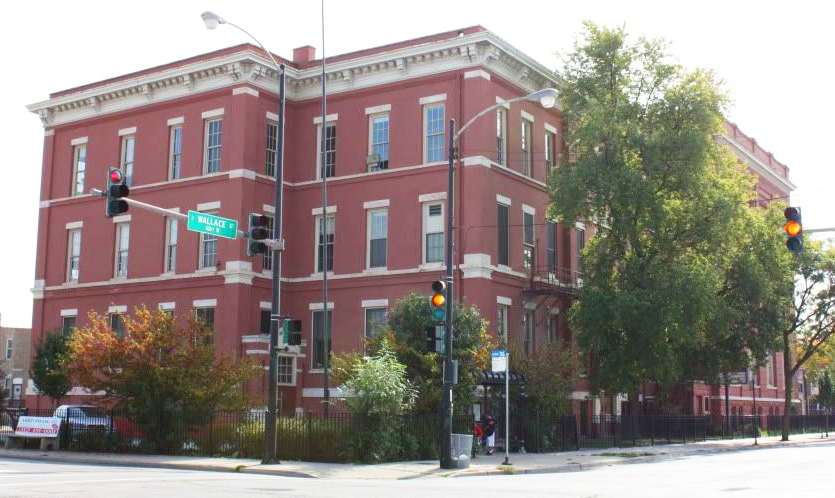Insights • May 29, 2025
The Link Between MEP Engineering and Higher Student Performance
The Link Between MEP Engineering and Higher Student Performance
The spaces where students learn have a tangible impact on their academic performance, health, and overall well-being. Clean, safe, and modern school facilities aren’t just about function, they help lay the groundwork for students’ success and a brighter future. Behind the scenes, a school’s mechanical, electrical, and plumbing (MEP) systems help to shape that learning environment. From better air quality to lighting and temperature control, MEP design directly supports student comfort and focus. As schools and universities work to teach and invest in the education of the next generation of students, investing in high-quality MEP systems can help their commitment to their students’ long-term success.
How Does Design Impact Education?

America’s school facilities are aging, with the average K–12 public school in the U.S. being built around 1968. The American Society of Civil Engineers has rated the condition of public school infrastructure a D+, and the National Center for Education Statistics has reported that half of all public schools need at least one major repair. This is about more than just curb appeal. The state of a school’s facilities directly impacts student health, safety, and academic performance. Teaching and learning become more difficult when classrooms are noisy, poorly ventilated, too hot or cold, or lack proper lighting and air conditioning. Researchers at the Harvard School of Public Health said, “The evidence is unambiguous- the school building influences student health, thinking, and performance.” Studies have found that poor conditions, like poor ventilation, uncomfortable temperatures, low lighting, and high noise levels, are linked to increased absenteeism, lower cognitive function, and reduced academic focus. An Institute of Education Sciences study found that student achievement scores in schools with “above-standard conditions were between 5 and 17 percentile points higher than those in substandard buildings.” Another group of researchers found that well-designed, well-maintained school facilities support academic performance, promote student health, and boost attendance. These findings make it clear that investing in school infrastructure isn’t just about modernization but equity, opportunity, and student success. When students learn in safe, comfortable, and well-designed environments, they’re better able to focus, stay healthy, and reach their full academic potential. For school districts, upgrading facility systems isn’t optional; it’s essential, and strategic MEP design is one of the most impactful ways to create learning environments that set students up for long-term success.
How Can MEP Design and Engineering Help Improve Academic Performance?

Ventilation: Poorly ventilated classrooms and school buildings can impact a student’s performance and health and have been linked to increased absenteeism for students with asthma or other health issues. In one study, researchers had students take tests in classrooms where ventilation levels were controlled, with the results showing that students in better-ventilated rooms performed significantly better on their exams.
Schools can install HVAC systems that include proper ventilation, air filtration, and humidity control to address this. These systems help keep air circulating, clean, and free of dust and allergens, and help prevent mold growth and other indoor pollutants. When well-designed HVAC systems like these are implemented, schools can create spaces that support student focus, reduce illness-related absences, and contribute to better academic outcomes.

Lighting: Lighting quality also helps to shape the learning environment. Classrooms that are too dim, overly bright, or lack natural daylight can make it harder for students to stay focused and comfortable. Harsh fluorescent lighting or dim environments can lead to eye strain, headaches, and migraines. Research consistently shows that proper lighting enhances student and teacher morale, reduces off-task behavior, and improves academic performance. One study found that students with the most access to natural daylight progressed 20% faster in math and 26% faster in reading than those in poorly lit classrooms. If a classroom lacks natural daylight, well-designed LED systems can be a solution. MEP engineers can select the right combination of wattage, color temperature, fixture placement, and even smart lighting controls, and create lighting systems that mimic natural daylight and adjust throughout the day to support student comfort and concentration.

Milhouse implemented these design principles at McClellan Elementary School, where we designed an energy-efficient LED lighting plan for their new 60,000-square-foot, four-story facility, helping to create an academically supportive space for Pre-K through 8th-grade students to thrive.

Electrical Systems: As schools depend more on Wi-Fi, laptops, interactive whiteboards, and AI-based tools, the demand for high-capacity, uninterrupted power continues to grow, but many older school buildings weren’t built to handle the electrical load required by today’s digital learning environments. Schools risk connectivity issues, system failures, and lost instructional time without the proper infrastructure.
MEP engineers can upgrade these systems to support evolving educational technology and design new electrical networks, helping schools power everything from classroom tech to backend systems. Milhouse supported the School of the Art Institute of Chicago (SAIC) in expanding their electrical infrastructure for their data center, which is home to all SAIC servers. We conducted a power supply study for the university, which included load flow analysis, short circuit evaluation, and arc flash electrical studies. Through our evaluation and customized recommendations, we provided solutions toward a more reliable, efficient, and future-ready electrical system that continues to support its students’ creative and academic needs.

Temperature Control: When classrooms are too hot or cold, it can disrupt students’ ability to concentrate, absorb information, and stay engaged. A National Bureau of Economic Research study found that “without air conditioning, each 1°F increase in school year temperature reduces the amount learned that year by one percent.” Additional research shows that student engagement and productivity are highest when indoor temperatures stay within the range of 68°F to 74°F for reading and math. Yet in many schools, teachers have no control over the climate in their classrooms, leaving students to learn in environments that are too warm in the summer or too cold in the winter.
MEP Systems like smart thermostats, occupancy-based climate controls, and room-specific settings allow schools to maintain consistent comfort throughout the day, supporting focus and well-being. At Milhouse, we’ve seen firsthand how these upgrades can transform school environments. At Kenwood Academy High School, we replaced outdated boilers and absorption chillers, which were causing extreme temperatures and frequent leaks. We installed a new boiler, chiller, and DDC BAS system to restore comfort and control. At Prosser High School, we upgraded a 100-year-old air handling unit. We replaced a boiler from 1918, installing all-new infrastructure that modernized the heating system and laid the groundwork for future cooling with a dedicated chiller.

Creating effective learning environments requires smart, intentional facility design in today’s educational landscape. Clean air, consistent temperatures, lighting, and reliable electrical systems affect student health, focus, and academic performance. These elements often go unnoticed but are foundational to a productive and supportive learning space. Milhouse’s facilities team specializes in designing MEP systems that prioritize comfort and reliability so educators can focus on teaching and students can focus on learning. With a strong emphasis on energy and resource efficiency, we help schools invest in infrastructure that supports student well-being and long-term success.
